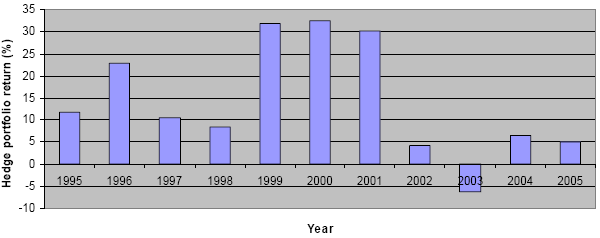Market mavens look at consumer, investor, analyst and forecaster sentiments. What about the sentiment of the executives of a company of interest? Does what they think about the prospects for their company matter? How can investors determine what they think? In the April 2006 version of his paper entitled “Do Stock Market Investors Understand the Risk Sentiment of Corporate Annual Reports?”, Feng Li examines the relationship between management risk sentiment and future company earnings and stock returns. Managers arguably have more freedom to express themselves in text than with numbers. Using counts of words related to risk or uncertainty in 34,180 Securities and Exchange Commission (SEC) Form 10-Ks filed between calendar years 1994 and 2005 to measure management risk sentiment, he concludes that:
- The reports examined contain an average (median) of 70,279 (41,973) words, offering a substantial barrier to investor attention and rationality. Investors/traders may not read or fully comprehend them.
- A year-over-year increase in management risk sentiment indicates lower future earnings. However, a decrease in risk sentiment does not indicate higher future earnings. These asymmetric results may stem from management efforts to avoid litigation at all times.
- The larger the increase in management risk sentiment, the more pronounced the underperformance of the firm’s stock price. This relationship holds after adjustments for standard return risks and survives in subperiods and subsamples.
- A portfolio that is long firms with small increases in management risk sentiment and short firms with large increases in risk sentiment produces excess risk-adjusted annual returns of more than 10%. (See figure below.) This excess may be economically significant for investors/traders.
- Analysts do not immediately capture the implications of an increase in management risk sentiment in their earnings forecasts.
The following figure, taken from the paper, shows the annual returns for a hedge fund that is long firms with small increases in management risk sentiment and short firms with large increases in risk sentiment. Holdings are value-weighted and rebalanced monthly.

In summary, investors/traders generally underreact to the sentiment expressed by executives in company annual reports.
This conclusion may also apply to other SEC filings, especially those that are long and complex.